#original apex 40
Explore tagged Tumblr posts
Text
armand’s costumes are such an interesting data point re: his nebulous sense of identity.
when analyzing any costume, there are always many factors to consider: the setting, the character’s personal taste and economic constraints, storytelling concerns like tone and genre, etc. with armand, we also need to remember that he’s 500 years old and violently disconnected from his human origins. everything he wears has an element of disguise, selected to blend into a new environment.

armand was enslaved as a child in 16th century delhi, and barely remembers his mortal life. unlike louis - who can return to new orleans after 80 years and reconnect with his past - armand has no home to return to. his whole backstory, even his name, is rife with traumatic subtext, leaving him with an obsessive need for structure and control. this adds an extra layer of meaning to costuming choices that initially seem like straightforward menswear.
armand’s 1940s wardrobe is very put-together - primarily three-piece suits and coats that make him look wealthier and more formal than louis, who is purposefully dressing down. most of these outfits are tailored to bulk up armand's frame, leaning into the "maitre" persona. and like his business-casual dubai wardrobe, he always leaves his collar open. when i interviewed costume designer carol cutshall, she described this as a symbolic power move, signalling that he's an apex predator who doesn't need to protect his throat.

my personal interpretation is that while armand clearly likes to look good, he has a complicated relationship with attractiveness. he doesn't always want to draw attention. his color palette is shadowy (black, grey, brown, olive green), and he’s much less flashy than the other Théâtre vamps. however when he’s feeling confident and flirty, he becomes more of a power-dresser - for instance his hunting outfit with the big coat and sunglasses, or his habit of wearing kohl.


interestingly, most of armand's 1940s costumes set him apart from the coven. the Théâtre vampires dress like cabaret performers, embracing a lot of period-specific styles. by contrast armand is more timeless and neutral. in fact, due to the relatively minor changes in men's suits over the past 100 years, there's a lot of overlap between his wardrobe in the 1940s, '70s and 2020s:



the rest of the Théâtre squad share an unofficial uniform of boldly clashing monochrome patterns with pops of bright color. meanwhile armand has a very plain wardrobe, emphasizing the image of him as a businesslike authority figure surrounded by zany artistes. he only wears subtle stripes on a few occasions in the '40s, reflecting the recurring prison motif we see in lestat's trial suit and (most famously) the dubai penthouse bedroom:

if we ask the question, "what does this person like to wear?" there are easy answers for lestat, louis and claudia. we understand their tastes, and the motives behind them. but armand is more enigmatic. we can recognize through-lines in his wardrobe, but his "taste" is dominated by whatever role he's currently decided to embody, whether that's a parisian theater director or a real estate mogul in dubai.
the times when he appears to have the most fun with clothing are when he steals a pair of sunglasses from his human dinner (!) and when he's pretending to be rashid. in other words, when he's explicitly performing for an audience. "real armand" is still a mystery.
(i may write more about armand's dubai wardrobe later, but for now, you can find all of my iwtv costumes posts on this tag!)
#armand#iwtv#interview with the vampire#assad zaman#costume design#iwtv costume design#1940s#iwtv meta
3K notes
·
View notes
Text
I really do think this is the end for Israel. The beginning of the end at least. They're essentially a relic of an earlier time, a time when, through a complex confluence of factors, the military power of Europe was so far beyond the rest of the world that it could openly keep the world in shackles. The Imperial powers of Europe could do as they wished and respond to any resistance with overwhelming violence that, no matter how costly in money or lives or how many years it took, would eventually force open resistance to come to a (temporary) end. You saw exceptions of course, such as Ethiopia's successful repulsion of Italian invaders in the 1890s (although even that victory is somewhat undercut but Italy's more successful invasion about 40 years later), but in the majority of cases even the most brave and intelligent of resistance fighters would see themselves worn down and defeated. Just off the top of my head you have figures like Samori Toure, Omar al-Mukhtar, Samuel Maharero; all inflicted numerous defeats on their European Imperialist enemies but in the end couldn't overcome the sheer force that was arrayed against them.
Of course such supremacy was never absolute even at it's apex, and this height was so very short lived. Resistance never fully stopped; outbursts of violence were frequent and various forms of passive resistance like migration, tax evasion and industrial slowdown were ubiquitous. Resistance movements learned from past failures, acquired the weapons of modern war and soon proved a credible threat to the Imperialist forces that by the middle of the 20th century had exhausted themselves through in-fighting. Whether evicted through direct violence or choosing to leave under the inevitable threat of it, the European powers largely ended their direct domination over the colonised world. That's not to say Imperialism was over, far from it, but it mostly took on subtler forms; more soft power with only the occasional resort to hard. Imperial domination is now more than ever exerted through various local proxies and the broader forces that keep them in check as direct subjugation just isn't especially viable.
In the parts of the world without substantial settler populations this withdrawal was accomplished smoothly enough; most of the Europeans present either left without a fuss or found some sort of niche under the new order of things. But the liberation of colonies with large settler populations was a longer and bloodier process; just compare the French withdrawal from Indochina to that from Algeria or the fate of Northern Rhodesia (now Zambia) to Southern Rhodesia (now Zimbabwe). A large number of Europeans were heavily entrenched in these colonies and had both their material wealth and sense of pride tied to the maintenance of white supremacy. Many politicians back in Europe were less willing to abandon such settler colonies, while with or without support from back home the colonists engaged in their own bloody wars of oppression against indigenous people.
But in the end they all fell. Algeria, Rhodesia, Angola, South Africa, the list goes on. Even as these places continue to suffer under the yoke of less direct Imperialism they can take pride knowing that the scourge of direct setter subjugation was defeated. Exploiting people is one thing; there are many ways you can accomplish this without the exploited truly catching on. But the sort of violence it takes to brazenly steal control of a people's land, settle yourself on it while keeping the original inhabitants as second class citizens is going to engender the fiercest resistance no matter what. The only remotely stable settler colonies are those where the indigenous peoples were already decimated by disease before being subjected to centuries of genocidal policies, reducing their current population to a small minority of the nation. And even then the survives continue to resist fiercely. In places where the settlers remained the minority there was simply no chance of such regimes surviving for long.
Israel as a state is among the last of its kind, and I see no reason why it shouldn't meet the fate of all other such colonies. The way I see it the end of Israel is inevitable. The only question is just how much bloodshed and suffering it'll take. The struggle has been ongoing for so very long. I truly hope that we're seeing the final stages of it, but I suppose only time can tell. All I know for sure is that from from the river to the sea, Palestine will be free
632 notes
·
View notes
Text

Apandah sdp au lore and ref sheets FINALLY.. apologies i genuinely forgot to post these after i finished them..
apandah in my au lives on a planet whose species are mainly subterranean due to its expansive cave systems and mostly flat outer surface, they developed the ability to shape shift to aid in catching prey in differing environments making them the apex predators.
because of how flat and seemingly unpopulated this planet was to earth explorers originally they used it as a landfill for a while before they realized life was present and tried to act like it never happened. Because of this apandah is actually known as SpongeBob before coming to earth because he really liked a SpongeBob movie cd case and named himself after it. He changes it to apandah after sneaking into a carrier for earth animals with schlatt and thinking that a panda was what he actually was
he maintains the pink on his planet by eating copious amounts of red 40 though switches his diet to shrimp, pink marshmallows, and other pink or red things once on earth

When on earth every once in a while he needs to use a human disguise since some establishments don’t accept the answer that he’s just a furry
When he shapeshifts he can ONLY be in his original colors which is easy to overlook but he just likes the alien since ‘it’s important to be open’ or something
the only thing that isn’t just apandah other than the sticker is the skirt because Astrid gave it to him and he just went along with it instead of telling her he could just shapeshift one. (All of it feels like skin, including the hair)
those aren’t socks or shoes that’s just him again
noticeably shorter than all the other human forms and shifts from the tallest to the second shortest in this form normally
there isn’t a lot more to comment on considering apandah doesn’t really have any crazy backstory here, he’s just like that, but I really like it anyways and hope you do too!!
Thank you for reading lovely lovely 😛
33 notes
·
View notes
Text
Dragons in a Trail of Cryptids
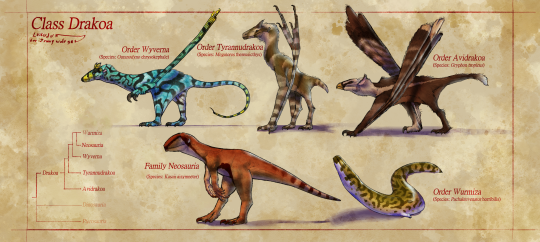
I don't care if this technically was posted in march i uploaded it to deviant art in time this is a february art post lmfao. This was meant to be a birthday gift for @jennywolfgal and her other project Trail of Cryptids. Enjoy!!!
The world of Trail of Cryptids explores an evolutionary history for life on earth. One in which the beasts of our folklore are more fact than fiction. Cryptids and mythological creatures exist and evolved naturally through both expected and unexpected origins.
One such group of organisms are the legendary dragons of countless tales of our world. Here they only recently diversified, but their ancestry dates all the way back to the beginning of the triassic.
Their earliest ancestor was a third offshoot of the Avemetatarslians, the same group of archosaurs that gave rise to the dinosaurs and pterosaurs. Ancient Silesaur-like Paradrakoans lived under their brothers’ shadows for the entire mesozoic period. Only scraping by through the smallest niches and farthest corners of the world like the equally unfortunate mammals.
Once the asteroid hit the earth 66 million years ago and wiped out the dinosaurs and pterosaurs. Only 2 representatives of this once great clade remained. Birds, and a single paradrakoan. A small burrower classified as Fodermasaurus superstes, cheekily named by paleontologists as the spug.
It took a long time for the Drakoans to grow their wings and spread it. At first climbing trees and making burrows, then gliding to ease the falls from the canopy. Then longer webbing on the hands to change direction. And finally learned to flap them to gain height. Countless now dead lineages, finally producing the first Drakoan over 40 million years ago during earth’s late eocene.
Nowadays the Drakoans are a fairly small group. They only consist of roughly 1,116 species. A far cry from their far more successful avian cousins. But nonetheless a monumental achievement relative to their entire evolutionary history.
Some common traits that distinguish the Drakoans from other vertebrates are developed egg-teeth that some species retain well into adulthood. Large auricles or external ears, Keratin horns. And most notably powered flight, evolving independently from their avian cousins.
We’ll start out with the order Avidrakoa. An order of Drakoans unique for possessing fully developed beaks derived from their egg teeth. And a unique wing structure made more out of fur bristles than a tough skin membrane. The Avidrakoans first split the moment the class as a whole first evolved powered flight. Allowing their wings to be this derived
They are not too common, numbering in 148 species in total. Most of which are split between basal bipeds such as thunderbirds and the more derived quadrupeds which include griffins.
The species here is an actual griffin. Gryphon tropicus to be exact. They are apex predators of the rainforests of indonesia. Their deep warm coloration and disruptive stripe conceal them in the forest scenery to ambush prey. And their powered flight lets them hop across islands, making them not only a formidable predator, but a widespread one too.
The most famous members of the Drakoan class are the Eudrakoans, the true dragons. They are characterized by their strong parenting mentalities and a natural ability to breathe fire. Through 4 orifices in the corners of their mouth they spew out a liquid biofuel into the path of a similarly regurgitated and highly reactive gas, igniting the fuel into a stream of flaming liquid.
They are the most widespread group of dragons, totalling at 447 different species. Most species are either small sprawling quadrupeds such as the European forest dragon to erect striding quadrupeds like the legendary Eurasian mountain Tsar
The species representing the True Dragons. Megaloros thereusicthys is a close relative to the Eurasian mountain Tsar. Although unlike their apex cousin this species is a wading piscivore. Using their stilted legs to practically hover over the water and their flexible necks to pluck fish out of the rivers they tread through.
Next up is the order Wyverna, a group of Drakoans distinguished by the development of poison laced quills found in certain places along the body. All interconnected to a set of poison glands in the upper mandible. These glands oddly enough share the same ancestry as the biofuel tanks in the Eudrakoans. And a stiffer wing structure making them obligate bipeds
They are the second most common order of dragons. Numbering at 335 documented species. Including the cockatrice surprising many.
The species pictured here is Ouranodyno chrysokephale. A generalist omnivore with a generalist range across Mexico with a rather extravagant hunting method. They dive-bomb towards their prey and catch them with their mouths. More as showmanship for mates than an actual means to survive. They also have extravagant coloration to warn would-be attackers of their poisonous tail quill that could kill a bison in under a minute
There is the order Wurmiza, the most derived group of dragons recorded. They are distinguished by a near complete lack of hind legs. Fully internalized ears, a streamlined annelid-from body plan, and aquatic to semi-aquatic lifestyle. They are the 2nd rarest order of dragons. Consisting of only 124 documented species. Consisting of the smaller seafaring Ladons and the larger Oceanic sea Serpents.The species used to represent the Wyrms, Pachaktevenator horribilis. Is a medium sized sea serpent found in the Indian ocean. They are notable for their extreme aggression and their mating season being spent on the beach. Draconian elephant seals if you will.
Lastly, despite only being a family. This last group of dragons is peculiar enough to warrant it's own highlight in this introduction. The Neosaurs are in a way a twisted mirror of the beasts of the past. They are notable for a complete lack of wings, reduced horns and aurica. But are most recognizable for the Theropod-like body plan most Neosaurs display. Which is speculated to be a consequence for their ancestors having stiff wings like their Wyvern cousins.
They are a very rare order, there are only about 62 species documented. Most of them are found across africa as smaller generalists. But a few can get big enough to recapture what the original dinosaurs had lost
Representing the Neosaurians, the Kasaii asymneter is a south african desert dwelling relative to the legendary Kasaii rex of the southern congo rainforest. They are both pursuit hunters and act relatively similar. The main difference is the prey selection and differenc coloration.
#speculative zoology#spec bio#speculative biology#my art#artist on tumblr#art#worldbuilding#dragon art#year of the dragon#wyvern#creature#creature art
82 notes
·
View notes
Text
My personal takes and headcanons on the characterization of Sonic characters (Post Frontiers):
Sonic:
In his early 20's .
Bisexual.
A more mature version of the character, still has a youthful energy and the attitude of a snarky teenager, but is a lot more reflective about his actions and the consequences they have.
Runs at problems just as often as he runs FROM them.
Seeks comfort in the status quo of his life, but as he ages he starts to understand the weight of his choices.
Never wants to slow down, and growing scares him.
Sees the best in people and tries to give them the freedom he yearns for.
Scared of compromise because he feels it would tie him down.
Lighting based powers.
Older brother figure for Tails, very protective of him, which is why he took so long to grow out of Sonic's refuge.
In love with Amy, but constantly avoids her advances out of fear of commitment.
Friendly rivals with Shadow.
Frenemies with Eggman.
True Rivals with Metal Sonic.
Eggman:
In his 30s-40s
Deeply respects Sonic's skill, but hates him still
Values the loyalty and efficiency of machines, and normally thinks that life as a whole would be better off if he could control it and make it work like his machinery.
He dislikes the idea of having living/human henchmen, as he doesn't want the chance of someone betraying him like the ones before, only put into question when Sage enters his life.
Maniacal and egocentric.
Despite his selfish nature and actions, sometimes his more human side comes when the topic of family is brought to the table, although he will never admit it.
VERY protective father, would torch a city for Metal and Sage.
Tails:
12-15
Still unsure about his sexuality, likely straight.
Little brother of Sonic.
His flight speed allows him to catch up to Sonic, but he is still pretty slow on his feet.
Lived under Sonic's guidance for so long he struggles to see his flaws, or to think of himself as anything else but Sonic's sidekick.
Has self-confidence issues.
Wants have a chance to be a hero of his own.
Despite being an inventor, he sometimes feels like he compensates his lack of skill with his machines, which prompts him to train harder.
The strategist of the team, tries to keep tabs on everything and everybody.
Often overworks himself.
Night owl.
Wind based powers.
Friends with Shadow (Nerds)
Sort of friendly rival with Omega.
Rivals with Eggman on who can be the better mind, often outsmarted by the doctor.
Metal Sonic:
Behaves like a teenager, around 15-19
Exists as an AI interconnected to the Eggnet, but chooses to remain attached to his original vessel.
NEO is a spare body, and not a different version/upgrade.
Views Eggman as a father figure, and his diligence to protect him is not rooted in his code, but in his own will, which is why he will run to his aid even when it is an irrational or actively harming move.
Despite suddenly having stopped being an "only child" with the appearance of Sage, Metal isn't bothered or envious about Sage, but rather shares an odd sibling bond with her as she can properly relate to him.
However, instead of jealousy or hatred towards Sage, he often feels self conscious and suffers from identity crisis, as he is split between being Sonic's double, an AI, an Eggman's son, and often has Sage comfort him on his doubts, much to his own shame.
Is deeply starved for recognition and praise by Eggman, and his outburst as NEO are attempts to surpass him in order for Eggman to recognize Metal's achievements, although this only annoys him.
CAN talk in all forms, but chooses to remain non verbal for a majority of the time, only letting out scarce comments here and there, speaking to Sage almost all of the time in binary/through the Eggnet, and reserving the monologues and speeches for his NEO form.
Unlike the other Robots who rebelled against Eggman for their will and identity, Metal wants everyone to recognize him as the apex of efficiency that Eggman seeks in his machines.
HATES Surge and Shadow for mocking him, and often goes out of his way to fight them.
Rivals with Sonic, has a deep hatred for the Hedgehog, and considers him the copy, regularly starts fights with him and challenges him to races.
Amy:
In her early 20s
Pansexual.
Has tried to follow Sonic's pace since childhood out of her love of him, but has slowly grown out of her love quest an into a development of her own.
As or even past Knuckles in physical strength, and damn near Sonic in speed, could duel Shadow to a standstill.
Still deeply in love with Sonic, but she recognizes that Sonic is too free spirited to allow her to have a chance, and has since attempted to move on from her childhood crush, much to Sonic's dismay.
Wants to have her own adventures and make her name before settling down.
Hard working, and very versatile, a good leader.
Kind and welcoming, is often the one to try to introduce people, and the one who taught Sonic and Shadow to forgive and give their opponents a chance.
Her hammer grows in weight by a small margin every day.
Can swim.
Learnt how to intimidate people from Vanilla, and can even make Shadow nervous when she has her outburst.
Is often the therapist and confidant of the group.
Calls Sonic by his legal name when angry.
Water based powers.
Doesn't get along with Rouge.
Tries to be an example to cream, and a figure to rely on for everyone else.
Hangs out with Mecha Sonic on the occasion.
Is one of the few people that Blaze can let loose around.
Knuckles:
Mid 20s
Straight
Is still the Guardian of the Master Emerald, but yearns for an opportunity to do something else with his life.
Is still introverted, but being around Sonic and the others has put his loneliness into perspective.
Works as a bounty hunter every so-often, taking interest in ancient relics and artifacts.
Amy's personal trainer, always happy to help someone with physical training.
Quick to get into a fight, never backs down from a challenge.
Simpleminded, but not ignorant.
Is actually very knowledgeable about archeology, history, and geography.
Dating Rouge (When Team Dark and Team Sonic fight they sneak off to make out).
Still close friends with the Chaotix, often asking them to guard the Master Emerald when he is gone.
Fire based powers.
Shadow:
Mid 30s (Mentally)
Aromantic
He acts edgy and full of himself when he is relaxed, but cool and collected when at work or when the situation calls for a levelheaded attitude.
Still uses guns, but only when the situation calls for it, and only against robots, often using his hands to incapacitate criminals.
Works with G.U.N. alongside Rouge and Omega, having made ammends with the organization after the invasion of the Black Arms, finding a mutual understanding with commander Tower, and while they still retain a rather estranged relationship, they try to work for the betterment of the world.
Team Dark is still together, and work as a special agent division for G.U.N., being tasked with specific high importance missions.
Shadow still remembers Maria, but rather than letting himself be controlled by the past, he uses Maria's words as a compass to go in the side of good, not trying to obsess with his promise or his origins, but trying to grow into a better person.
Has trouble expressing his emotions, and often has people misinterpret his words with sarcasm.
The few people who can actually read his emotions are Team Dark, Sonic, Knuckles and Amy.
Has nightmares of Gerald, Black Doom, and Mephiles.
He loves latinas.
Tries to be a father figure/mentor to Silver, often teaching him practical knowledge and training his abilities, but has troubles establishing an emotional bond with him.
He is close friends with Knuckles and Amy, as Amy is someone he can emotionally rely on, and Knuckles understands his solitude and trouble expressing himself.
Friendly rivals with Sonic, often playfully teasing him or challenging him, but still holding a great deal of respect.
Rivals with Mephiles. Shadow lays awake at night, fearing that he returns.
Silver:
18
Straight.
Was always a dork, but having lived in the hellscape of crisis city had him on edge at all times, not allowing him to properly develop.
A far descendant of one of the other 2 hedgehogs.
Has a crush on Blaze but is unable to act upon it, since he doesn't want to ruin the relationship they have.
Uses the timestones to travel through time, but tries not to abuse their power to avoid causing problems in the timeline.
The rings around his wrists serve a similar purpose to Shadow's, but instead of limiting his inner psychokinesis, they help Silver control it, as without them, he struggles with being able to measure his own strength, often resulting in using large pulses of psychokinetic energy, or shockwaves that shake city blocks when he feels strong emotion.
So far removed from his original future that it does not exist anymore, with Silver being a creature immune to the flow of time.
Is close friends with Blaze, being a good confidant and partner for her when things get rough, often visiting her to chat or hang out.
Psychic and Light powers.
Has nightmares of Mephiles.
Is Shadow's student, often asking him to help him train to use his powers and to further master abilities like Chaos Control.
Is Rivals with Infinite, being one of the few people that can undo/bypass his time travel with the Phantom Ruby's reality warping.
Super Transformations:
Super Sonic: Still the most reliable transformation, although Sonic has tried to avoid using the emeralds to not rely on their power too much, wanting to grow his own strength instead.
Hyper Sonic: The most powerful yet unstable form for Sonic, far surpassing that of Super Sonic and even SS2 but costing a massive amount of power from the Emeralds and lifeforce from Sonic himself. Knuckles advised to avoid using that power again, and Sonic forbade the others from trying to reignite the Super Emeralds.
Super Tails: Tails is still not strong enough to handle the power of the Emeralds, and while he can transform, the energy consumption pays a heavy toll on his well being, which is why he often avoids using the Emeralds.
Super Knuckles: Knuckles is no stranger to transforming, and regularly uses the Master Emerald to transform when Eggman or another powerful foe tries to attack Angel Island.
Super Amy: Amy can transform, and is in fact very powerful when she does, but often chooses not to, as while she can handle Chaos Energy just fine, she lacks the necessary contol to make use of a super form, often shooting large energy blasts and afterimages unintentionally when swinging her hammer.
Super Shadow: The overload of chaos energy REQUIRES Shadow to remove his inhibitor rings in order to use his super form, and while he is the one with the most ability to control this form out of the entire cast, he is also the one who takes the heaviest toll after it, often leaving him completely drained after the fact for several days
Super Silver: Power overload is downright tyrannical, able to level entire cities and lift continents into the sky with relative ease. However, his rings are not built to control that amount of power, and overusing his super abilities may lead to him straining himself until he bleeds from his nose, potentially causing brain damage if he pushes his limits for far too long.
#sonic#sonic the hedgehog#silver the hedgehog#shadow the hedgehog#hc#headcanons#amy rose#knuckles#knuckles the echidna#miles tails prower#tails the fox#this was written before sxsgens#will probably edit it to add some extra corrections
32 notes
·
View notes
Text
The Dome of the Halle au Blé — Ironwork in Paris in the 19th Century

The Halle au Blé under demolition in 1887

The Halle au Blé was transformed into the Bourse de Commerce — Pinault Collection. Though most of the original building was changed, the iron dome designed in 1807 was kept in tact.
The iron dome of the Halle au Blé (which housed the grain exchange of Paris during the 18th and 19th century), was the largest iron structure in the world at the time of its construction between 1807 and 1813.
The original dome of the Halle au Blé was made of wood and burned down in a fire in 1802.
The replacement dome, upgraded to cast iron, was designed by François Bélanger. The design was sent to a committee headed by Becquay-Beaupré, and was approved by Napoleon in 1807.
Bélanger's elegant and audacious design was submitted to Crétet, who consulted with Napoleon. The emperor approved the project in a decree of September 4, 1807. Napoleon was interested enough in the project to visit the site during construction, and he personally dedicated the dome. Actual construction began in 1809 with cast iron produced at Le Creusot, but the dome was not ultimately completed until 1813, having cost 700,000 francs, seven times more than the original estimate.
Bélanger’s iron dome is important because it was the largest iron structure of its day, and it was several decades before another of such magnitude was constructed. The elegant and slender ribs of the dome seen from 40 meters below create an illusion of lightness far surpassing that which is possible with other traditional framing materials.

The novelty of the use of iron and the thinner dimensions made the Halle au Blé a notable attraction in Napoleon’s day and throughout the 19th century. Pierre Fontaine, whom Napoleon had named First Architect and who had argued with the emperor regarding the Vendôme Column, the Temple of Glory, the Pantheon, the Pont des Arts, the Pont des Invalides, and the Pont d'lena, found the dome to be much more satisfying in its use of iron than these other structures.
“This work,” he wrote, “is one of the most remarkable which has been erected under the present regime.” In fact, many of the Parisian guidebooks of the last century give ample treatment to its description, since the dome was considered to be one of the significant landmarks of the capital.

Conversion to the Bourse de Commerce:
The engineer Cosmo Canovetti was charged in 1887 with the reconstruction of the Halle au Blé and its conversion into the Bourse de Commerce. In order to determine whether to retain or reconstruct the dome, Canovetti examined it for any deterioration. He calculated the bending moments by means of funicular polygons, a process unknown to Bélanger, in order to determine whether the additional weight of a roof covering over part of the dome would create any structural problems. Canovetti found the structure adequate, and he observed that Bélanger had understood well the appropriate ratio of diminution to give the ribs from their spring points on the masonry wall to their apex at the compression ring which forms the lantern base.
Source:
Building with Iron: A Napoleonic Controversy, Frances H. Steiner, Technology and Culture, Volume 22, Number 4, October 1981, pp. 700-724 (Article), Published by Johns Hopkins University Press
#Halle au Blé#architecture#napoleonic reforms#reforms part 2#Frances H. Steiner#napoleon#napoleonic era#napoleonic#napoleon bonaparte#first french empire#french empire#history#Cosmo Canovetti#bourse#bourse de commerce#François Bélanger#Bélanger#france#1800s#19th century#iron
16 notes
·
View notes
Text
The taxonomy of Sly Cooper: Part 2
So, the first entry of this series was pretty well-received. Here's part two. This time we'll be focusing of the villains of the first Sly-game, The Fiendish FIve.
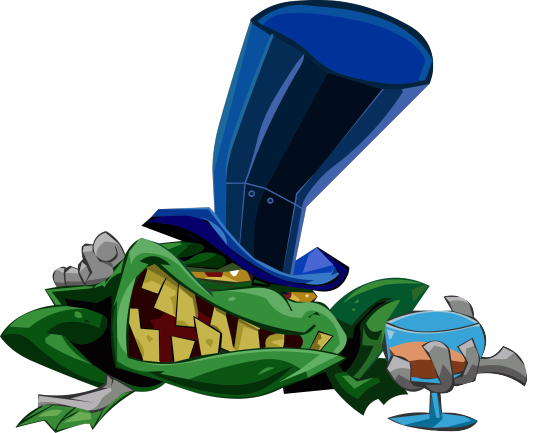
Raleigh was actually kinda difficult to pin down, as he is pretty much just a generic non-descript frog. Looking at a list of amphibians in the British Isles didn't exactly narrow it down, as the UK also has several non-native species of frogs with varying degrees of naturalization. Eventually I settled with the species that I thought best matched his colouration, the marsh frog (Pelophylax ridibundus)
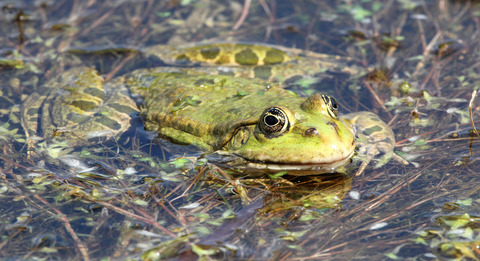
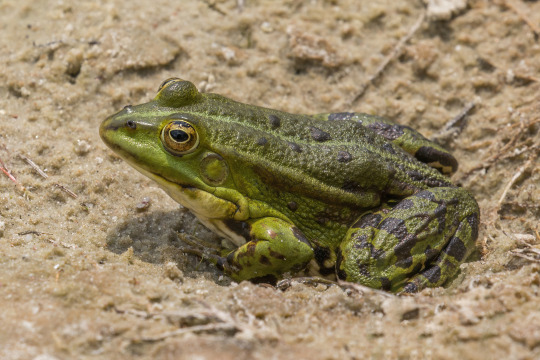
At up to 4 inches long, the marsh frog is the largest and one of the most widespread frog-species native to Europe, although it isn't native to the UK, being introduced in the 1930's. Within the UK it is primarily found in south-eastern England. Researchers are still undecided as to wether or not it poses a threat to the local ecosystem.
True to their name, marsh frogs are generally found in marsh regions, being more tolerant of saltwater and pollution than other frog-species. Like most frogs they primarily feed on insects and other invertebrates, but thanks to their size they can also prey on smaller fish, birds, and rodents.
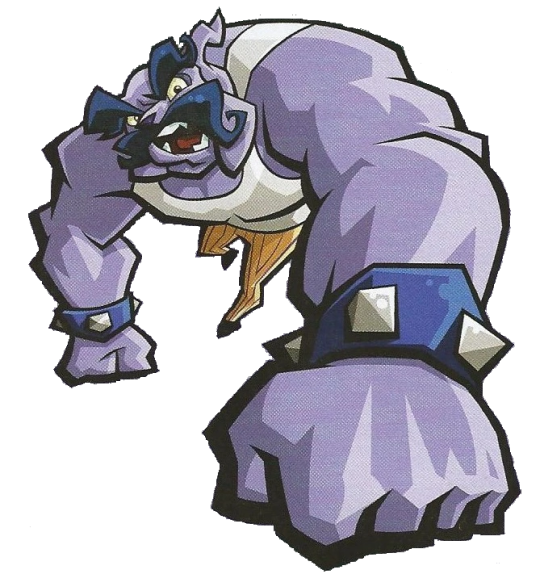
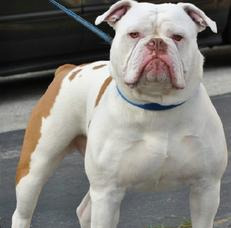
In contrast, Muggshot was fairly easy to figure out. He is unsurspirisngly an american bulldog, particularly of what is called the "bully"-type. Domestic breeds generally aren't my forté, but I'll do my best.
American bulldogs were originally an offshoot of the english bulldog, which were brought to America following the colonization, where they were primarily used as livestock guardians and catch dogs. The "bully"-type ( also known as the "Johnson" or "Classic"-type) was created by dog-breeder John D. Johnson in the mid 19th-century, by crossbreeding standard american bulldogs with an english bulldog, resulting in a line of dogs that are bigger, more muscular, and with a more pronounced underbite than the standard variation, all very reminiscent of Muggshot.
Primarily used as guard dogs nowadays, american bulldogs are considered to be a loyal and courageous breed with strong protective insitncts. They riquire rigourous training and exercise in order to stay healthy (and make sure they don't skip leg-day, like a certain someone)
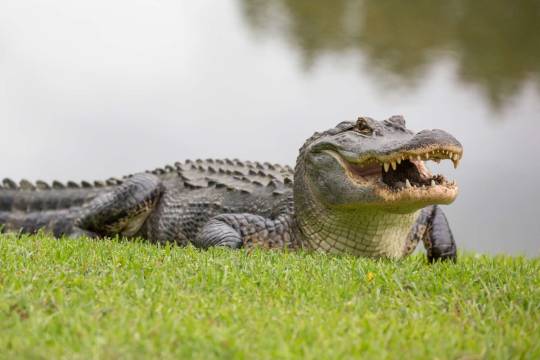
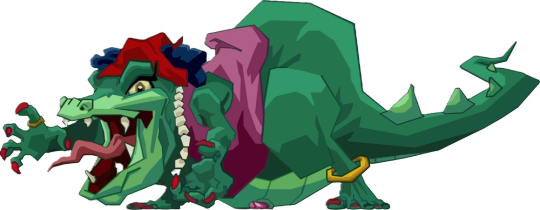
Mz. Ruby also proved to be alittle bit tricky. I had originally pinned her as an american crocodile (Crocodylus acutus) given that she lives in Haiti, where the only native crocodillian is the american crocodile. The Sly Cooper Wiki refers to her as an american alligator (Alligator missisipiensis), but there is nothing in-game that confirms this. However, i then realized that she is probably Cajun given her accent. The Cajun culture originates in Louisiana, where the only crocodilians are american alligators, so that kinda seals the deal.
You wouldn't really know that just by looking at her though. Alligators are distinquished by having short, broad snouts with an overbite. If we look at Mz. Ruby, while her her snout is kinda broad, she sure as hell doesn't have an overbite.
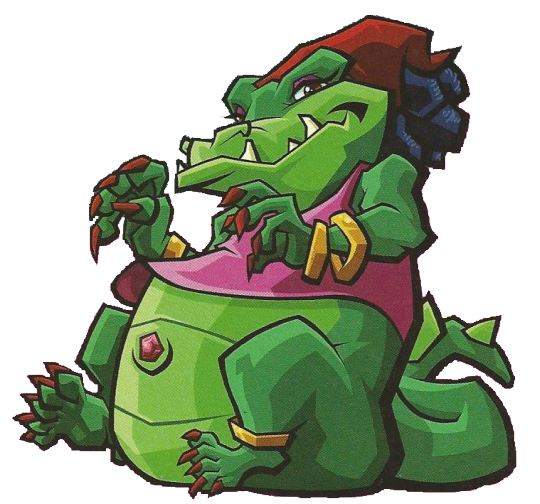
Petty taxonomy bullshit aside, american alligators are found throughout the swamps, rivers, and lakes of the south-eastern United States. They are the apex predators of their environment, and eat pretty much any animal they can get their jaws on. Although their range overlaps with that of the american crocodile in Florida, the two species generally don't compete over resources.
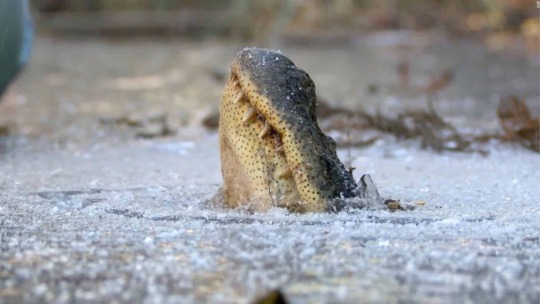
American alligators are some of the most cold-resistant reptiles, being able to survive temperatures as low as 40 degrees fahrenheit or 7 degrees celsius. Should the water they live in freeze over they can go into a kind of suspended animation, by digging a hole in the ice to breathe through, whilst lowering their metabolism and bodily functions to a minimum. Not quite the breaking of the laws of life and death that Mz. Ruby has got going on, but still pretty cool.
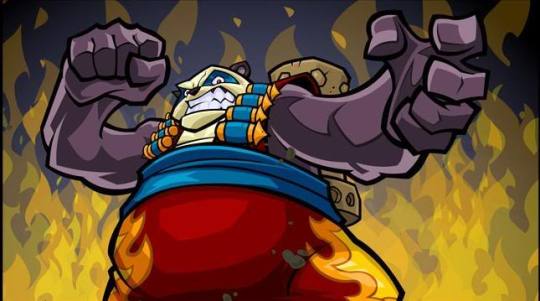

Moving unto the Panda King, and yeah... There is no getting around the fact that he is clearly meant to be a giant panda (Ailuropoda melanoleuca). I briefly toyed with the idea of him being one of the many extinct species of Ailuropoda, but that was too far-fetched.
Giant pandas are of course renowned for their cute appearance, strict bamboo diet, and for being the face of animal conservation. Though infamously endangered by habitat-loss in their native mountain range, they are considered less endangered nowadays, being given the IUCN-status of Vulnerable.
And no, pandas aren't an evolutionary dead-end or a lost cause in terms of conservation, and don't deserve to go extinct. Anyone who tells you otherwise likely doesn't understand ecology.
The giant panda is notable for having an extra long sesamoid bone on its front paws, in additon to its five fingers. While not a true finger, this bone practically works like an opposable thumb, which comes in handy when handling bamboo shoots (though it'll take some time before they master the art of pyrotechnics)
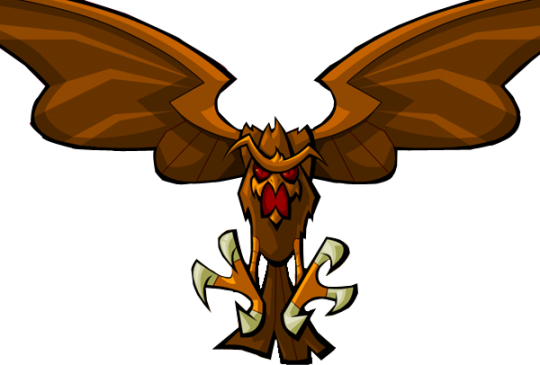

Finally we have Clockwerk, the immortal arch-nemesis of the Cooper Clan. His in-game description doesn't give us much to work with, other than that he is an owl of some kind. We do know that he apparently had an orange plumage before becoming a cyborg. Due to his large size and having a base in Russia, some people have identified him as a eurasian eagle-owl (Bubo bubo), which I can defintiely see.
I however subscribe to the theory that Clokcwerk was originally from Ancient Egypt, and thus like to think that he's a pharaoh eagle-owl (Bubo ascalaphus).
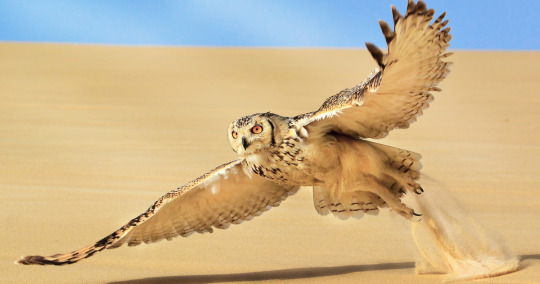
With a wingspan of about 3 feet, the pharaoh eagle-owl is actually one of the smaller members of its genus. It is found throughout Northern Africa along with parts of the Arabian Peninsula. It likes to nest around cliffs and river valleys, where it primarily feeds on rodents, reptiles, and other birds, but occasionally takes on prey as large as hares and desert foxes.
The ancient egyptians associated the owls with wisdom and knowledge, but also regarded them as symbols of mourning and death. Owls were sometimes mummified alongside humans, as it was believed that their night-vision would help guide the deceased through the darkness of the underworld.
15 notes
·
View notes
Text
I promised freakier robot sex and I shall deliver. 30% of works under the tag "Wire Play" are Detroit: Become Human fics, and 11% are Five Nights At Freddy's. 7.4% of Stanley Parable fics (Humanized Narrator excluded) are smut and 10 of those have sex with exposed wiring.
I apologize for telling "Detroit: Become Human" fans to "get on that" for having fewer Robot Sex fics (7.5% of Robot Sex fics are FNAF, and 5.1% are Detroit: Become Human). Star Trek: The Next Generation is also a popular one, which I will probably get into later with a Data-centric post.
3,089 Works in The Stanley Parable
Humanized Narrator (The Stanley Parable) (791) (excluded)
2,298 works not tagged Humanized Narrator
The Narrator/Stanley (The Stanley Parable) (1331)
The Narrator (The Stanley Parable)/Reader (85)
The Curator | The Female Narrator/Mariella (The Stanley Parable) (44)
Smut (170)
Wire Play (10)
3,424 Works in Robot Sex
Five Nights at Freddy's (257)
Original Work (223)
Detroit: Become Human (Video Game) (178)
1,320 Works in Wire Play
Detroit: Become Human (Video Game) (391)
Five Nights at Freddy's (147)
Overwatch (Video Game) (110)
Original Work (40)
Star Trek: The Next Generation (37)
Fallout 4 (37)
ULTRAKILL (Video Game) (35)
Futurama (32)
ワンパンマン | One-Punch Man (26)
Apex Legends (Video Games) (26)
8 notes
·
View notes
Note
🧚♀️ Anon
I read your Hibernation Fic and I love it so much! I even thought about some potential fetishes Naga Risotto might have before and after mating season (I want to hear your opinions and thoughts about them)
I feel like Naga Risotto will have a weird obsession watching Darling eat since her mouth is so small (Since she can’t dislocate her jaw like he can when he eats his prey) and she eats all her food in such tiny sized bites (It might act up his lust, but he’s trying to be patient until Spring)
He’s definitely anticipating Spring, as he intends to make Darling’s stomach round and swollen with his eggs (You think Darling’s body would act as a sort of incubator to keep the eggs warm as they grow and form) then a few days before they hatch will Darling have to pop them out? But since they have soft shells they probably won’t hurt her (But for her safety the eggs are actually very small)
Do you think Risotto would develop an obsession when Darling starts to lactate when he gets her pregnant? He probably didn’t know Human bodies could produce milk, so he might suckle and massage them to relieve Darling of her soreness, even if she doesn’t want him to do that (He might develop a taste for her milk and is happy to find out she’ll lactate when she’s pregnant, thus he’ll try to breed her constantly, like a rabbit 😭)
Out of curiosity, what species of snake do you think Risotto would be? A Black Mamba? Or maybe a King Cobra? (King Cobras tend to lay 20 to 40 eggs, while a Black Mambas can lay 6 to 20 eggs)
Sorry if this is weird, I have a deep love and obsession with Reptiles, I love everything about them
Don't worry about it, as someone who loves snakes too I get it. Besides I'm a massive fact collector lol.
In terms of species I think the king kobra works best because of it's apex predator status, their extremely slow metabolism as well as the fact that they build nests.
And oh lord the fetishes.
The watching darling eat thing originally starts as a "caring gesture" because his kind tends to eat alot more and he assumes darling is under eating. I think it kinda stems back to a size kink, she's way smaller then him and he finds that cute.
He really tries to hold off on his urges til spring. As he doesn't want to scare darling off or have her get all defensive.
Usually with Nagas they live in solidarity, only searching for one another during mating season and leaving very shortly after, so having a lifelong partner is a very rare thing for his species. There have been tales spread of a few Nagas that claimed humans as their mates, so it's not a completely foreign concept but an oddity still with not a lot of knowledge is shared about the experience.
So seeing how darlings belly swells with his eggs is surely a sight to behold. It's endearing to see how well she's taking his clutch for him. He's going to be pepper her in kisses the whole time and showering her in praise the entire time.
And the lactation kink oh boy. One taste and he's hooked, the moment he sees darling lactate he's already latched on. It's not like the clutch are going to need it.
#yandere jjba#yandere jojo's bizarre adventure#yandere x reader#yandere#yandere risotto#monster au#🧚♀️ anon
16 notes
·
View notes
Photo

4.25" HUGE Carcharodontosaurus Dinosaur Tooth Fossil (Similar to T-Rex) - Cretaceous, Kem Kem Beds, Morocco - 100% Genuine, COA
This listing features a stunning 4.25" Carcharodontosaurus dinosaur tooth fossil from the Kem Kem Beds, Tegana Formation, Aptian, Cretaceous, located in the renowned Kem Kem Basin, Morocco. This is a large and exceptional specimen, carefully selected for its impressive size and detail, making it a prime addition to any fossil collection. The tooth comes complete with a Certificate of Authenticity, ensuring its genuineness and provenance.
About the Carcharodontosaurus:
The Carcharodontosaurus, often referred to as the "shark-toothed lizard," was a massive carnivorous dinosaur that roamed the Earth during the Aptian to Albian stages of the Early Cretaceous period (approximately 125 to 100 million years ago). This apex predator measured up to 40 feet long, rivaling the Tyrannosaurus rex in size and ferocity.
Its name derives from its shark-like serrated teeth, which were perfectly adapted for slicing through the flesh of its prey. Fossils of Carcharodontosaurus are highly sought after due to their rarity and historical significance, with Morocco's Kem Kem Beds being one of the few places in the world where these specimens are discovered.
Details of the Fossil:
Species: Carcharodontosaurus saharicus
Size: 4.25 inches (measured length of the tooth)
Formation: Tegana Formation, Kem Kem Beds
Age: Aptian stage, Cretaceous period (~125-100 million years old)
Origin: Kem Kem Basin, Morocco
Condition: Natural and authentic with excellent preservation of serrations. Please note that the photo provided is of the actual specimen you will receive.
Scale Cube: The scale cube shown is 1 cm for precise sizing.
Why Choose This Fossil?
Exceptional Size: At 4.25 inches, this tooth is a remarkable example of Carcharodontosaurus dentition.
Scientific Value: A well-preserved specimen from a historically significant fossil site.
Collector's Dream: A perfect addition to any professional or amateur fossil collection.
Guaranteed Authenticity: Every purchase includes a Certificate of Authenticity, ensuring the fossil’s provenance and genuineness.
Shipping and Guarantee:
We take great care in packaging your fossil to ensure it arrives safely. Each item is shipped promptly and includes a Certificate of Authenticity for your records. If you have any questions or need additional photos, please don’t hesitate to reach out.
Add this stunning piece of prehistoric history to your collection today—an impressive reminder of the incredible creatures that once ruled the Earth.
Thank you for viewing, and we invite you to explore our store for more exceptional fossils!
#Fossil#Tooth#T rex#Carcharodontosaurus#Saharicus#Theropod#Dinosaur#Cretaceous#Ancient#Prehistoric#Teeth#Fossilized
2 notes
·
View notes
Text
Finally makinv my original Species :D, they will be open, just remember to credit me




Their called Tangolds and lemme just paste the stuff about em
So Tangolds are a female Dominated species, the females are bigger,stronger and faster than the males and are the ones that normally eat first. The males hunt and bring back their kills and wait to eat right after the babies. Tangolds can change their gender, either when a mate dies or when they just wanna.
The males are the ones that give birth and can lay up to 20 eggs, when the eggs first come out, they are extremely soft and squishy and considerably slimey, they have a disgusting smell that wards off predators that try to eat them. They harden after some days. If the eggs are un fertilized, Tangolds would eat them or gift them to wanted partners or close friends, it is seen as a generous gift and will be seen as disrespectful if you dont eat them.
When the eggs hatch, they look like kittens with 6 legs as they crawl around. They are called pups and the whole pack takes care of them. Pups are seen to be very playful and adventurous .
Female Tangolds can reach over 40+ft tall while Males are almost 27ft tall.
They can run on their hind legs but much prefer running on all of their legs. Their tears are like acid so its extremely rare to see them cry as they are not resistant to it and easily burns themselves.
It is noted that their tails have mouths and also a mind of their own and they also have to eat.
Tangolds have 4 hearts, two stomachs, 2 brains and 4 lungs.
Tangolds are considered apex predators and have a 78% successful hunt rate. When hunting prey, they stalk them for many many miles to see their behavior and what is the weakest to take down. They can run for 8 hours straight without getting tired and they hunt in packs to overwhelm the animal.
They have regenerative abilities where cutting off arms or any limb can easily be grown back, the rate depends on how long it'll take.
They can fluff up their fur to seem more intimidating and bigger when threatened .
They are extremely intelligent and can copy noises to a certain extent and can solve
Different puzzles.
They also have a natural enemy which is a parasite that takes over bodies and controls the body. If a Tangold is affected by this parasite, the pack will rip their comrade apart and boiling the body to kill it.
They have their own language they speak but they can also learn other languages with ease.
They have amazing hearing where a pin can drop and they will immediately hear if, this does make them very sensitive to sound so if say, a gunshot were to go off right next to them, they would immediately cover their ears and seem very distressed.
The males are extremely colorful and it is to attract potential mates, while the Females colors are very dull and not that impressive
It is normal to see Male and Male or Female and Female mates, and if these type of mates wang a baby, they would either steal some eggs or adopt unwanted babies
They are also seen to have certain weapons they use for certain prey like a "Hammer" for prey with hard shells. They have six fingers and the sixth finger has a long flaw that helps them dig in tree holes for any insect.
They also show interest with shiny objects and will also give them to potential mates.
They also wear jewelry to show their status, the more jewelry on them, the higher their status
Their afraid of pickles and nail clippers
If one is comfortable enough around you, they will make a guttural sound around you and lay on top of you, don't touch them though as they can become aggressive immediately
Some Tangolds will sometimes fight over scraps of almost anything, it could be clothes, food or even shiny objects
They also have manes
#art#artists on tumblr#artwork#original art#my art#oc art#character design#oc#oc artist#original character#original species#open species#Tangolds
7 notes
·
View notes
Text

Bright candy colors that you can't find anywhere else!
BEST OF VIP
Mr. Eiji Nakamura OWNER
23 years old
Nakamura-kun, who helped me with various things such as shooting.
★ Y33 Gloria
Nakamura-kun's 33 Gloria, where the beautiful and deep candy paint stands out. The aero is also processed so much that there is no prototype left, creating a unique style. Audio-related is also substantial, and it is a specification that has enough highlights even in the trunk. It is said that the IMC bonnet and audio system will be remade in the future, but the car has a sufficient presence even at this point.
DRESS UP DATA
Exterior: Wise type front 3cm extension, side processing, rear processing/more collage wing putty filling 5cm extension/IMC bonnet duct processing/original eye line/original fender duct/wide fender (F:4cm R:8cm)/ Fuel filler airbrush ●Body color: Candy Coral Red ●Interior: Ital Volante steering wheel/Fun vision meter/Black leather seat/Silver stone panel
Wheels ABC(F 18x11J, R 18x13J) 245/40-18 R: 295/35-18)/Bilstein Original Harmonic AV: Mackintosh Head Unit Changer/Chronic Amplifier/Boston Speaker/Surwin Pega Subwoofer/Phoenix Gold Equalizer/Chronic Capacitor Muffler JIC Cannonball Mold processing functional parts: Apex intercooler/original computer/Trust boost controller Cost: ? 10,000 yen
PIC CAPTIONS
The bonnet duct and original eye line make you feel the high level.
Over fenders with a beautiful finish that can handle 13J wheels.
8 notes
·
View notes
Text


2 titanfall oc's -i need to bother do more than doodles
Name: Captain Rain -Apex predator Age: 33 Origin: earth Gender: male Sexual preference: pansexual Titan: Kova (K-3232) female Ronin (modified) Specializes in Cloak and A-wall
Name: Kinsey Webb -SRS Age: 40's Origin: Harmony Gender: male Sexual preference: straight Titan: vanguard specializes in pulse and holo.
4 notes
·
View notes
Text


Ala are hag-like fey with a connection to storms and lightning. Their hair is always blown about by wind, and whatever clothes they wear quickly become smoky black in color and ragged. While they appear as ancient humanoids, their secret form can be seen by those born with six fingers on each hand, which consists of a whirlwind vortex where their lower body would be. Whenever an ala takes to the air in flight or channels the power of lightning, she immediately shifts to her true form, the electricity coursing through the windstorm that replaces her legs. Even while the whirlwind is disguised, when an ala enters a house the entire building will groan as if rocked by powerful wind.
Ala are voraciously hungry, becoming apex predators in the wild that devour wolves, badgers, and even bears. They often find their way to humanoid settlements, as humanoid meat is a favorite, preferred over that of wild beasts. An ala will stalk the streets of a small settlement, particularly during storms, and pluck those who dare exit their homes into the air to devour, unless placated by gifts. Unfortunately, generally the only gift that can ward off an ala's predation is a more delicious looking meal in the form of another humanoid.
Originally from the Tome of Beasts 1. This post came out a week ago on my Patreon. If you want to get access to all my monster conversions early, as well as access to my premade adventures and other material I’m working on, consider backing me there!
Pathfinder 2e
Ala Creature 8 CE Medium Fey Electricity Perception +15; low-light vision Languages Aklo, Common Skills Athletics +17, Intimidation +13, Stealth +15 Str +5, Dex +3, Con +4, Int +1, Wis +4, Cha -1 AC 27; Fort +16, Ref +15, Will +16 HP 128; Immunities electricity, sonic; Weaknesses cold iron 10 Poison Flesh (poison) A creature that bites the ala or otherwise consumes any of the ala's flesh is exposed to ala venom. Whirlwind Form (polymorph) If the ala takes the Fly action or uses lightning's kiss, it's lower body automatically transforms into a whirlwind. It remains in this form until it goes for one minute without Flying or using lightning's kiss, or is knocked unconscious or killed, at which point it automatically returns to normal. Speed 25 feet, fly 40 feet Melee bite +17, Damage 2d8+9 piercing plus ala venom Melee claw +17 (agile), Damage 2d6+9 slashing Ranged lightning's kiss +17 (electricity, magic, range 60 feet), Damage 7d10 electricity damage. It can't use Lightning's Kiss again for 1d4 rounds. Ala Venom (poison); Saving Throw DC 26 Fortitude; Maximum Duration 6 rounds; Stage 1 1d6 poison damage; Stage 2 1d6 poison damage and enfeebled 1; Stage 3 2d6 poison damage and enfeebled 1 Storm's Strength (electricity) In stormy weather, the ala gains a +2 circumstance bonus to attacks with lightning's kiss.
13th Age
Ala 4th level troop [humanoid] Initiative: +8 Venomous Bite +9 vs. AC - 10 damage. Natural Even Hit: The target also takes 8 ongoing poison damage. Natural Odd Hit: The ala can pop free from the target. R: Lightning’s Kiss +9 vs. PD (one nearby enemy) - 18 lightning damage. Limited Use: 2/battle, when the escalation die is even. Flight. Resist Lightning and Thunder 16+. AC 20 PD 16 MD 16 HP 54
#Pathfinder 2e#13th age#homebrew#my homebrew#monster#fey#pathfinder level 8#13th age level 4#long post
2 notes
·
View notes
Text
UPDATED VERSION (bc I did just click through all the links)
Tor, cream of the crop. 25 cents a word. Stories can be read for free (YES). Slowish response time at ~3 months. Prefer under 12k, absolute maximum is 17.5k. Don’t bother if it’s not highly professional quality. SFWA qualifying. (https://reactormag.com/submissions-guidelines/)
Crossed Genres. 6 cents a word. Different theme each month (this month’s is “failure”). Submissions must combine either sci-fi or fantasy with the theme. Response time 1 month. 1k-6k, no exceptions. SFWA qualifying. (http://crossedgenres.com/magazine/)
Long Hidden, anthology from CG. 6 cents a word. 2k-8k, no exceptions. Must take place before 1935. Protagonist(s) must be under 18 and marginalized in their time and place. Must be sci-fi/fantasy/horror. Deadline 30 April. Response by 1 October. (Seems to have ended)
Queers Destroy Science Fiction. Sci-fi only right now, author must identify as queer (gay, lesbian, bi, ace, pan, trans, genderfluid, etc, just not cishet). 7.5k max. Deadline 15 February. Responses by 1 March. You can submit one flash fiction and one short story at the same time. (My network blocks the Lightspeed site for some reason, so I can’t get all the submission details. >_>) Probably SFWA qualifying? (Seems to have ended)
Women in Practical Armor. 6 cents a word. 2k-5k. Must be about 1) a female warrior who 2) is already empowered and 3) wears sensible armour. Deadline 1 April. Response within three months. (Seems to have ended)
Fiction Vortex. $10 per story, with $20 and $30 for editor’s and readers’ choice stories (hoping to improve). Speculative fiction only. Imaginative but non-florid stories. 7.5k maximum, preference for 5k and under. (I kind of want to support them on general principle.) (Link in the og post broken)
Urban Fantasy Magazine. 6 cents a word. 8k max, under 4k preferred. Must be urban fantasy (aka, the modern world, doesn’t need to be a literal city). (http://www.urbanfantasymagazine.com/ last posts seem to be from March 2023)
Nightmare. 6 cents a word. 1.5-7.5k, preference for under 5k. Horror and dark fantasy. Response time up to two weeks. SFWA and HWA qualifying. (https://adamant.moksha.io/publication/nightmare/guidelines submissions currently closed)
Apex Magazine. 6 cents a word. 7.5k max, no exceptions. Dark sci-fi/fantasy/horror. SFWA qualifying. (https://apexmagazine.submittable.com/submit submissions currently closed)
Asimov’s Science Fiction. 8-10 cents a word. 20k max, 1k minimum. Sci-fi; borderline fantasy is ok, but not S&S. Prefer character focused. Response time 5 weeks; query at 3 months. SFWA qualifying, ofc. (http://asimovs.magazinesubmissions.com/ poetry also accepted)
Buzzy Mag. 10 cents a word. 10k max. Should be acceptable for anyone 15+. Response time 6-8 weeks. SFWA qualifying. (Site unreachable)
Strange Horizons. 8 cents a word. Speculative fiction. 10k max, prefers under 5k. Response time 40 days. Particularly interested in diverse perspectives, nuanced approahces to political issues, and hypertexts. SFWA qualifying. (http://strangehorizons.com/submit/fiction-submission-guidelines/ submissions currently closed, will open again in late 2024)
Fantasy and Science Fiction. 7-12 cents a word. Speculative fiction, preference for character focus, would like more science-fiction or humour. 25k maximum. Prefers Courier. Response time 15 days. (Site unreachable)
Scigentasy. 3 cents a word. .5-5k. Science-fiction and fantasy, progressive/feminist emphasis. Fantastic Stories of the Imagination. 15 cents a word. 3k maximum. Any sci-fi/fantasy, they like a literary bent. (psst, steinbecks!) They also like to see both traditional and experimental approaches. Response time two weeks. (I think the site has been taken over by some kind of dental service? It still had the original name and banner about providing short stories, but every article was about dentistry)
Beneath Ceaseless Skies. 6 cents a word. 10k maximum. Fantasy in secondary worlds only (it can be Earth, but drastically different—alternate history or whatever). Character focus, prefer styles that are lush yet clear, limited first or third person narration. Response time usually 2-4 weeks, can be 5-7 weeks. SFWA qualifying. (https://www.beneath-ceaseless-skies.com/submissions/)
Clarkesworld. 10 cents a word up to 4000, 7 afterwards. 1-8k, preferred is 4k. Science-fiction and fantasy. Needs to be well-written and convenient to read on-screen. Appreciates rigour. No talking cats. Response time 2 days. SFWA qualifying. (https://clarkesworldmagazine.com/submissions/)
Orson Scott Card’s Intergalactic Medicine Show. 6 cents a word. Any length. Science-fiction and fantasy (along with fantastic horror). Good world-building and characterization. Clear straightforward prose. Response time three months. Yes, OSC is editor-in-chief. SFWA qualifying. (Seems to have ended in 2019 as per this article http://www.intergalacticmedicineshow.com/cgi-bin/mag.cgi?do=content&article=submitform)
Interzone. Sub-pro rates if anything (but highly respected). 10k max. Short cover letter. Science-fiction and fantasy. (http://ttapress.com/interzone/currentissue/)
so I’m looking at short story publishers (fantasy)
Tor, cream of the crop. 25 cents a word. Stories can be read for free (YES). Slowish response time at ~3 months. Prefer under 12k, absolute maximum is 17.5k. Don’t bother if it’s not highly professional quality. SFWA qualifying.
Crossed Genres. 6 cents a word. Different theme each month (this month’s is “failure”). Submissions must combine either sci-fi or fantasy with the theme. Response time 1 month. 1k-6k, no exceptions. SFWA qualifying.
Long Hidden, anthology from CG. 6 cents a word. 2k-8k, no exceptions. Must take place before 1935. Protagonist(s) must be under 18 and marginalized in their time and place. Must be sci-fi/fantasy/horror. Deadline 30 April. Response by 1 October.
Queers Destroy Science Fiction. Sci-fi only right now, author must identify as queer (gay, lesbian, bi, ace, pan, trans, genderfluid, etc, just not cishet). 7.5k max. Deadline 15 February. Responses by 1 March. You can submit one flash fiction and one short story at the same time. (My network blocks the Lightspeed site for some reason, so I can’t get all the submission details. >_>) Probably SFWA qualifying?
Women in Practical Armor. 6 cents a word. 2k-5k. Must be about 1) a female warrior who 2) is already empowered and 3) wears sensible armour. Deadline 1 April. Response within three months.
Fiction Vortex. $10 per story, with $20 and $30 for editor’s and readers’ choice stories (hoping to improve). Speculative fiction only. Imaginative but non-florid stories. 7.5k maximum, preference for 5k and under. (I kind of want to support them on general principle.)
Urban Fantasy Magazine. 6 cents a word. 8k max, under 4k preferred. Must be urban fantasy (aka, the modern world, doesn’t need to be a literal city).
Nightmare. 6 cents a word. 1.5-7.5k, preference for under 5k. Horror and dark fantasy. Response time up to two weeks. SFWA and HWA qualifying.
Apex Magazine. 6 cents a word. 7.5k max, no exceptions. Dark sci-fi/fantasy/horror. SFWA qualifying.
Asimov’s Science Fiction. 8-10 cents a word. 20k max, 1k minimum. Sci-fi; borderline fantasy is ok, but not S&S. Prefer character focused. Response time 5 weeks; query at 3 months. SFWA qualifying, ofc.
Buzzy Mag. 10 cents a word. 10k max. Should be acceptable for anyone 15+. Response time 6-8 weeks. SFWA qualifying.
Strange Horizons. 8 cents a word. Speculative fiction. 10k max, prefers under 5k. Response time 40 days. Particularly interested in diverse perspectives, nuanced approahces to political issues, and hypertexts. SFWA qualifying.
Fantasy and Science Fiction. 7-12 cents a word. Speculative fiction, preference for character focus, would like more science-fiction or humour. 25k maximum. Prefers Courier. Response time 15 days.
Scigentasy. 3 cents a word. .5-5k. Science-fiction and fantasy, progressive/feminist emphasis. Fantastic Stories of the Imagination. 15 cents a word. 3k maximum. Any sci-fi/fantasy, they like a literary bent. (psst, steinbecks!) They also like to see both traditional and experimental approaches. Response time two weeks.
Beneath Ceaseless Skies. 6 cents a word. 10k maximum. Fantasy in secondary worlds only (it can be Earth, but drastically different—alternate history or whatever). Character focus, prefer styles that are lush yet clear, limited first or third person narration. Response time usually 2-4 weeks, can be 5-7 weeks. SFWA qualifying.
Clarkesworld. 10 cents a word up to 4000, 7 afterwards. 1-8k, preferred is 4k. Science-fiction and fantasy. Needs to be well-written and convenient to read on-screen. Appreciates rigour. No talking cats. Response time 2 days. SFWA qualifying.
Orson Scott Card’s Intergalactic Medicine Show. 6 cents a word. Any length. Science-fiction and fantasy (along with fantastic horror). Good world-building and characterization. Clear straightforward prose. Response time three months. Yes, OSC is editor-in-chief. SFWA qualifying.
Interzone. Sub-pro rates if anything (but highly respected). 10k max. Short cover letter. Science-fiction and fantasy.
49K notes
·
View notes